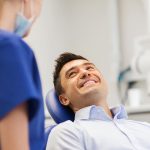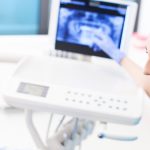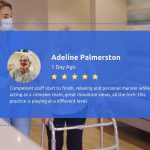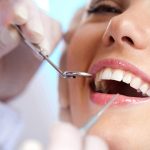What is – assisted hygiene?
It is the idea of using an assistant in your hygiene schedule.
There are Four KPIs for a hygiene driven practice.
These four key performance indicators have to be in place if you are a hygiene driven practice.
- A third of total office production coming from hygiene
- A daily production goal of $1,200 per day per hygienist
- 92% or more hygiene appointments should be filled-up each month
- 85% or more of you patients should be involved in active re-care

1. A third of total office production coming from hygiene
As a doctor, you need to measure where your productivity is. Often most of the dentists are well below 20%. If you are below 20%, it is an indication that you are under performing.
For a hygiene driven practice, we need one-third of the total production coming from hygienists, which is not simple to accomplish.
2. A daily production goal of $1,200 per day per hygienist
This number could vary from country to country. But you could take this as a rough goal to be achieved by a hygienist per day.
What counts as hygiene production?
We count everything that happens in the room except for the doctor’s exam. The doctor’s exam will get credited to the doctor, but we will count if the x-rays have been taken by the hygienist or not.
An assistant likely took the x-rays, but we will count that and, if they happen to do ancillary services like fluoride trays, sealants, or anything that they might do that would be an additional hygiene service, would count as a hygiene production.
3. 92% or more hygiene appointments should be filled-up each month
92% or more of your available hygiene appointments should be full at the end of the month. If you had a hundred available hygiene appointments for the month, that means you want 92 or more of those filled. Often, we see 76% – 78% or 80%. This is another indication of an opportunity for improvement.
4. 85% or more of you patients should be involved in active re-care
85% or more of your patients should participate in active re-care. They should regularly schedule re-care so that you could help them.
You could always tell the patient that you would love to talk to them about getting them committed to coming in regularly.
For example, you could say to your patient, – Your gums are nice and healthy, we’d like to see you every six months, and if we can get you to come in every six months, we’re going to accomplish two things. We are going to keep you as healthy as possible, and we are going to reduce your future dental expenses.
This way, you would be able to connect with them and convince them to visit you regularly.
These are the 4 KPIs that need to be in place for a successful assisted hygiene model.
How this model has been implemented at LifeSmiles Dental Practice

At my practice, we do our variation of assisted hygiene, and typically we would schedule an hour before we do assisted hygiene at LifeSmiles. Not necessarily for pedo appointments, but for an adult, we would schedule an hour.
When we moved to an assisted hygiene model, we decided to lend an assistant from the restorative-side over to our hygiene department, and one assistant in our office serves three hygienists. It allows each hygienist to see 11 patients a day instead of 8 patients a day.
As a result of this, we are adding nine more appointments a day to the hygiene schedule. There are certain things the assistant can do first, for example,
- the assistant can seat the patient at the beginning of the appointment
- can update the health history form
- can update / review with the patient any unscheduled treatment
Next, the hygienist would do the hygiene service, the real part of the appointment, the scaling, and the things that the hygienist is doing, and the assistant will finish up at the end of the appointment by doing a coronal polish.
At LifeSmiles, we always focus on ‘’excellence’’, so we make sure that we still maintain a better experience for our patients. For that, we have three conditions that are in place.
- The patient cannot feel rushed
- We still have to have time to review any unscheduled treatment.
- The quality of hygiene care has to be equal to what we have always done in the past.
That is how we do the assisted hygiene model.

What are some prerequisites for an assisted hygiene model?
This model is not a solution that works for every practice. Some prerequisites need to be in place.
- Need to have the room. You need an extra room where they can rotate.
- You need to have a dedicated assistant for hygiene. In this case, either have one that you can share, or you can hire one.
- You also have to have the demand for it. We’re shooting for eighty-five percent of your patients to be involved in active re-care, as it motivates the practice to get serious about involving your patients in re-care, which is such a benefit to the practice in so many different ways. It is like the gift that keeps giving when you have patients involved in active re-care, but again if you don’t have the demand for it, then there’s no reason to do assisted hygiene.
What if you are struggling with keeping up with the exams?
Perhaps the benefit is more exams if you find yourself struggling with keeping up with the exams, one of the things you could consider is doing some of your follow-up in the exams remotely and using the virtual consult to follow up and do the exams.
What is a virtual consult?
In this case, it would be a virtual hygiene exam. Imagine, you meet up with your patient, and you say, – it’s so good to see you. I wanted to pop my head in and say hello while you are here, and I have all the records to be able to do a more thorough exam for you. I have all the reports that we need, and one of the things that we found is that we can now do these remotely. I wonder if it would work.
But, let us say, it’s more complex or maybe you’re interested in determining whether a smile design is going to be right for you now, so you can say, – Hey I can do this while you are at home, and I can do this at the end of the day today.
Around fifty dental practices are actively doing this, and the value proposition is several folds.
- People tend to say yes to treatments when they are in a relaxed environment, and even before Covid-19, the office was not necessarily a relaxed setting as a lot of things are going on. There are other people in the next room. So, the patient is worried if the other person can overhear the conversation and think that something is wrong with me. So, all these concerns are there.
- The waiting area and the chairs and all other stuff that is like second nature to us often triggers discomfort for patients.
For the dentists that do this for years and to thousands of patients, it is no big deal, but for that patient, they come once every six months. Most people want to get out of the practice as soon as possible.
So, imagine having a consultation where the patient is at their home, perhaps on their couch or the study, in a relaxed dress quite comfortably. They are not trying to get out of there because it’s their home. Now they would be willing to have a comfortable conversation where you are listening to them. You can see what they are thinking and saying because you’re watching them face-to-face on a Zoom type meeting.
They can see you. You are relaxed, and they are more open to coming up with new treatment plans, new ideas.
Benefits to the doctor from a virtual consult
- You are not constricted by having to race off into the next room. You could provide higher value dentistry.
- You would have patients say, ‘‘yes’’ to you.
- Improve the quality in your standard of care
- It is not stressful as you don’t have to be in three rooms at the same time.
- Not pressurized
Listen to the podcast episode on, ‘’The Benefits of Assisted Hygiene’’ learn more on this topic.
This episode will give you much insight on if this model is for you, and how you could use this to improve your practice income.
In this episode, I share answers to:
- How do I know if I have enough demand to switch to the assisted hygiene model?
- Gary you had shared that ideally, my filled hygiene percentage should be at 92% or above, we are struggling at this and my office is about 80 to 82% filled, I feel like I need to fix this issue before going to the assisted hygiene model, am I thinking about this in the right way?
- I am not sure if my hygienists would be in favor of adding more patients into their schedule each day, how can I get them on board?
- I am not sure I have enough treatment rooms for the assisted hygiene model, how can I determine if I have the correct number of treatment rooms?
Want to learn about “A Bonus system that works?” Check out this article.









